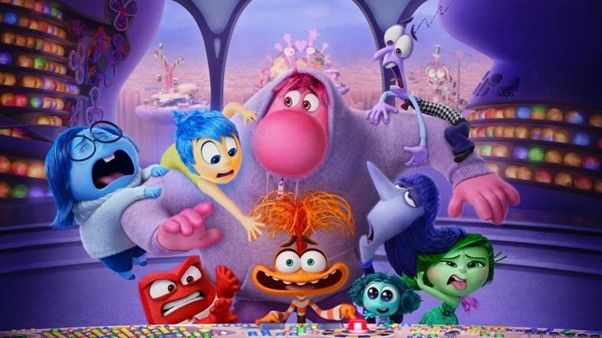Recently, a group of KFOT therapists got together to go see the new Inside Out 2 movie. The first Inside Out movie was fantastic for opening up conversations about emotional regulation with kids of a wide range of ages and we often use clips and ideas from the film in our sessions to help personify emotions to assist children in understanding their own emotions. So with this in mind, we were all super excited to see what the second movie was all about!
Warning: spoilers below!!
The first movie follows Riley, a young 11-year-old girl dealing with the difficulties of moving house, starting at a new school, and making friends. Following the first movie, we were curious to know what the second movie would be about.
Enter, puberty.
The original, insightful, and sensitive way the movie explored how our emotions and priorities can shift, change, and evolve during this pivotal part of life was fantastic to see. The new introduction of emotions Anxiety, Ennui (boredom, lack of spirit), Nostalgia, Envy, and Embarrassment paired hand-in-hand with Joy, Fear, Disgust, Anger, and Sadness.
The movie mainly focused on how anxiety can impact and shape our brains when going through puberty. Anxiety was really well represented, coming across as an emotion that always has Riley’s best intentions at heart while also showing the negative sides of anxiety, which quickly spiralled Riley (over the course of a 3-day hockey camp) into producing highly obsessive and controlling behaviours which significantly impacted her social connections, actions, and decision-making processing skills. We saw anxiety justify their decisions as something that would better Riley in the future, shutting down and suppressing many of the other emotions and opinions. This ‘shutdown’ caused Riley to eventually spiral from a mildly anxious to a highly anxious state, resulting in an anxiety attack during a hockey game. The representation of this anxiety attack was higly accurate, highlighting how anxiety can, at times, hijack our brain control system, make us feel very fast in our body, and feel as though a tornado of emotions is occurring in our mind. This tornado often suppresses any other emotion that may assist in grounding us to stop the anxiety spiral.
The hijacking of Riley’s brain also changed her core ‘sense of self’ attitudes, and behaviours. It shifted her morals and beliefs, which impacted her decision-making skills. We can often reflect on our early pubescent lives and consider how anxiety, envy, embarrassment, and ennui can significantly shape our morals and beliefs. Our values, opinions, emotional processing skills, and interests differed greatly. As we grow and progress through puberty and our teens, our experiences and memories shape our personality and values as an adult. The KFOT team loved how the movie emphasised that making mistakes helps to grow, shape and develop young teens' brains!
Overall, the Inside Out 2 was a fantastic watch for parents, adults, and children alike. It sparks opportunities for adults to reflect on their teens, opens up dialogue to discuss puberty and emotions with our teenagers, and allows insight into what is to come for our younger children. It’s a very digestible and healthy way to explore this vulnerable period for growing and developing children. If you haven’t seen it, we at KFOT strongly encourage you to check it out.
*note: while we would highly recommend this movie for all, it may be difficult for young children (younger than 7yo) to understand its content. In saying this, however, it’s a beautiful introduction to normalising emotions as a pre-teen (and also for teenagers), and sparking conversation about puberty with younger children.

Meet Anxiety!
